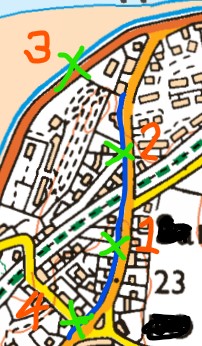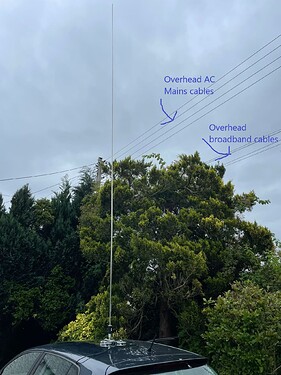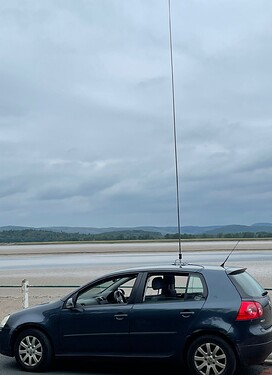I did a small investigation this afternoon (as afternoons and evenings is when the problem appears) to try to determine the source of the RFI.
First, I used my KX2 as well as my usual shack rig, a FT857, in the outside shack with the home QTH antenna (a 20%-80% OCFD). Comparing the FT857 and KX2 on bands 30, 20, 17, 15, 12 and 10m both for 300Hz and 2500Hz filter widths, it gave essentially the same S-meter readings of the static noise [as mentioned in my first post].
The KX2 noise blanker had the same effect as on the FT857, reducing S8-S9 noise to ~S1. So, I eliminated the FT857/LDG ATU as the problem.
I switched off the AC mains supply to the whole house [whilst running the KX2 on a LiPo] and that made no differences to the noise level on any of those bands. So, I concluded that the RFI is not coming via the mains electricity or a source within the house.
Then I set up the KX2/LiPo in the car with my Chameleon MPAS Lite vertical mounted on a large HF mag-mount on the car roof so I could see the variation, if any, with location.
‘Mobile RFI detection station’ on my driveway. Note: overhead cables on roadside
The numbered green crosses on the map show the four locations where I took readings. The blue line shows the line of 3-phase AC mains and broadband cables strung from telegraph poles that run up and down on my side of the street. Overhead spur cables branch off from the poles to individual houses all along the road.

© Crown copyright, Ordnance Survey 2022
Location 1: my driveway.
The noise level was slightly lower than in the shack. I put this down to the fact the driveway is partially surrounded by the house and garage whereas the OCFD is higher up and in the open in the rear garden. So, I eliminated the OCFD as the problem. The overhead cables were about 4m away from the vertical antenna here.
Location 2: Parked ~150m down the road. The noise levels were a bit reduced even though the vertical was only about 2m away from the overhead cables. [A BT engineer told the broadband cabinet is in the other direction and the number of customers drops to zero before the end of the road].
Location 3: Parked on the main ‘B’ road by the river estuary just outside the village.
There are no overhead cables there and widely spaced houses and none on the northern (estuary) side. The noise had dropped to under S1 (without using the NB).
Location 4: Centre of the village, still close to overhead cables. Readings same as location 2.
Conclusion:
- The fall of RFI level to zero at the edge of the village confirms the source is not Jupiter nor is it atmospheric. The noise sounds like your common-or-garden rapid pulse noise (like someone blowing a ‘raspberry’) and nothing like the two audio samples on the Radio Jupiter Central website.
- It’s probably man-made as the NB is very effective in reducing it. It could be a poor (‘sparky’) connection on the electricity telegraph pole on the road by my property [see photo] but that wouldn’t explain why the high noise is only in the PM.
- I wonder if there’s some time-of-day activity affecting either the overhead mains or the broadband cables.
- Precise source still TBD.


